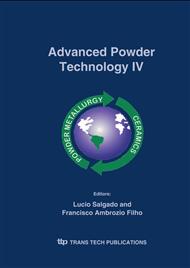[1]
Xu, H., Goug, S., Deng, L. Preparation of thermal barrier coating for gas turbine blades by EBPVD, Thin Solid Films, 334, pp.98-102, (1998).
DOI: 10.1016/s0040-6090(98)01124-9
Google Scholar
[2]
Schulz, U. et ali, Two-source jumping beam evaporation for advanced EB-PVD TBC systems, Surface and Coating Technology, 133-134, pp.40-48, (2000).
DOI: 10.1016/s0257-8972(00)00871-9
Google Scholar
[3]
Evans, A. G. et ali, Mechanics-based Scaling Laws for the Durability of TBC, Progress in Materials Science, 46, pp.249-271, (2001).
Google Scholar
[4]
Zhu, D. et ali, Thermal conductivity of EB-PVD thermal barrier coatings evaluated by a steady -state laser heat flux technique, NASA/TM-2000-210238.
DOI: 10.1016/s0257-8972(00)01145-2
Google Scholar
[5]
Goward, G. W., Progress in coating for gas turbine airfoils, Surface and Coating Technology, 108-109, pp.73-791998.
Google Scholar
[6]
Nicholls, J.R., Deakin, M.J., Rickerby, D. S., A comparison between the erosion behavior of thermal spray and electron beam physical vapor deposition thermal barrier coating, Wear, 233-235, pp.352-361, (1999).
DOI: 10.1016/s0043-1648(99)00214-8
Google Scholar
[7]
Czek, N. et ali, Studies of the bond-coat oxidation and phase structure of TBCs, Surface and Coating Technology, 113, pp.157-164, (1999).
Google Scholar
[8]
Hass, D.D., Thermal Barrie Coatings via Directed Vapor Deposition, Doctor Degree Thesis, University of Virginia, May, (2001).
Google Scholar
[9]
Almeida, D. S. et ali, Manufatura de Revestimentos como Forma de Barreira Térmica, Anais do Congresso Brasileiro de Engenharia e Ciência dos Materiais, Natal, (2002).
Google Scholar
[10]
Mumm, D. R.; Evans, A. G., Spitsberg, I. T. Acta Materialia, 49, pp.2329-2340, (2001).
Google Scholar
[11]
Stöver, D.; Funke, C., J. Materials Processing Technology, 92-93, pp.195-202, (1999).
Google Scholar
[12]
Leyens, C. et ali, Surf. Coat. Technol., 120-121, pp.68-77, (1999).
Google Scholar
[13]
Kim, D. J., Effect of Ta2O5, Nb2O5, and HfO2 alloying on the transformability of Y2O3stabilized tetragonal ZrO2, Journal of American Ceramic Society, 73.
DOI: 10.1111/j.1151-2916.1990.tb05100.x
Google Scholar
[1]
115-20, (1990).
Google Scholar
[14]
Kim, D. J. e Tien, T. Y., Phase stability and physical properties of cubic and tetragonal ZrO2 in the system ZrO2 - Y2O3 - Ta2O5, J. American Ceramic Society, 74.
DOI: 10.1111/j.1151-2916.1991.tb04302.x
Google Scholar
[12]
3061-65, (1991).
Google Scholar
[15]
Lee, D. Y., et ali, Low thermal phase stability and mechanical properties of Y2O3 and Nb2O5 co-doped tetragonal zirconia polycrystal ceramics, Journal of Materials Science Letters, 17, p.185187, (1998).
Google Scholar
[16]
Raghavan, S. et ali, Thermal properties of zirconia co-doped with trivalent and pentavalent oxides, Acta Materialia, 49, pp.169-179, (2001).
DOI: 10.1016/s1359-6454(00)00295-0
Google Scholar
[17]
Li, P. and Chen, I-W., Effect of dopants on zirconia stabilization - An X-ray absortion study: II, tetravalent dopants, J. Am. Ceram. Soc., 77.
Google Scholar
[5]
1281-88, (1994).
Google Scholar
[18]
Guo, X. and Wang, Z., Effect of niobia on the defect structure of yttria-stabilized zirconia, Journal of the European Ceramic Society, 18, pp.237-240, (1998).
DOI: 10.1016/s0955-2219(97)00123-4
Google Scholar
[19]
Roth, R. S. and Coughanour, L. W., in Phase Diagrams for Ceramists. Vol. 1, ed. E. M. Levin, C. R. Robbins, H. F. Macmurdie and M. K. Reser. The American Ceramic Socity, Columbus, OH, p.144, (1964).
Google Scholar
[20]
Lelait, L, Alpérine, S., Diot, C., Microstructural investigations of EB-PVD thermal barrier coatings, Journal de Physique III, vol. 3, pp.645-654, (1993).
DOI: 10.1051/jp4:1993968
Google Scholar
[21]
Schulz, U.; Fritscher, K., Peters, M. EB-PVD Y2O3 and CeO2/ Y2O3 stabilized zirconia thermal barrier coatings- crystal habit and phase composition. Surface and Coating Technology, n. 82, pp.259-269, (1996).
DOI: 10.1016/0257-8972(95)02727-0
Google Scholar
[22]
Scardi, P.; Leoni, M. Microstructure and heat transfer phenomena in ceramic TBC. J. Am. Ceram. Soc., v. 4, n. 84, pp.827-35, (2001).
Google Scholar


